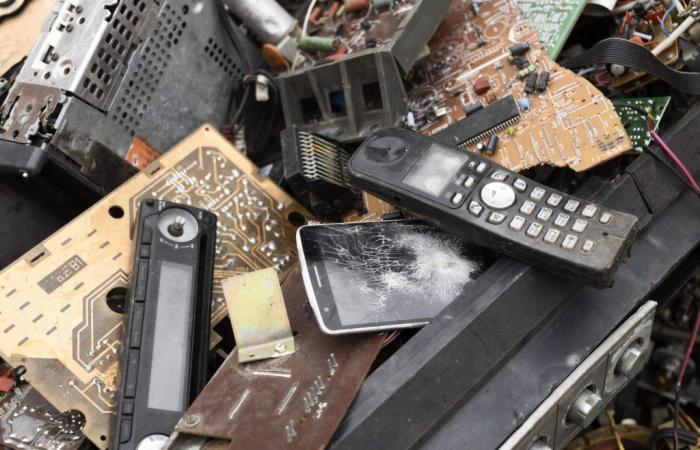Going somewhat unnoticed, the latest report from the United Nations (UN), published on March 20, focused on the management of electronic waste in the world, for the year 2022. And, unsurprisingly, it confirms that waste and climate do not go well together.
In 2022, the quantity of electrical and electronic equipment in the world reached 96 million tonnes, bringing with it a massive increase in related waste.
What equipment are we talking about? These include smartphones, tablets, computers, electronic cigarettes, hair dryers, microwaves and cookers, washing machines, coffee machines and even photovoltaic panels.
In Europe, for example, France comes in fourth place among the countries producing the most e-waste per capita.
Over the same period, only 22.3% of discarded equipment was collected and recycled in an environmentally friendly way, increasing from 8 million tonnes in 2010 to 13.8 million in 2022. The authors of the report find that the recycling rate increases five times slower than the production of electronic waste.
Why such slowness? Several factors can explain this: higher consumption of this equipment, limited repair options (and planned obsolescence), short life cycles, increasing digitalization which pushes the purchase of ever more recent models and inadequate infrastructure. electronic waste management.
These recycling infrastructures are sometimes “off the radar”. Indeed, 16 million tonnes are collected and recycled in middle and high income countries, in informal structures (groups and small artisanal businesses), while 18 million are processed by unofficial actors in poor countries (individuals, associations, etc.).
In the absence of any recycling system, this waste of electrical and electronic equipment unfortunately ends up in landfill. Thus, each year, hundreds of tons of mercury and 45,000 tons of plastic end up in our environment. Pollution is significant and the health of local residents is greatly affected.
And in France?
In 2021, 994,805 tonnes of waste electrical and electronic equipment were collected in France, for a recycling rate of 77%.
However, according to ADEME, no data is available to represent the impacts linked to greenhouse gases (GHG) of the management of this type of waste. not collected and processed within the framework of the sector.
Good to know. Centralized waste treatment in France generated approximately 14.7 million tonnes of CO2 equivalent (tCO2e) in 2020, i.e. 216 kg CO2e per inhabitant for the 68 million French people. This shows that household waste has a considerable environmental impact, even when properly treated.
What solutions?
Reducing our equipment consumption is one of the first solutions. Ask yourself: do I really need this equipment? And if this is the case, look for a sharing solution, rental or buy second-hand. Repairing rather than throwing away should also become a reflex.
On the business side, there are numerous levers. Life cycle analysis (LCA) is the standard tool used to measure the environmental impacts of a product or service. We must also increase the lifespan of devices, modernize recycling units and relocate them to France, review manufacturing processes and, why not, train engineers on climate issues.
Sources: UN, ADEME, CITEPA
https://www.itu.int/en/mediacentre/Pages/PR-2024-03-20-e-waste-recycling.aspx






